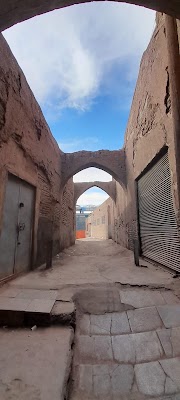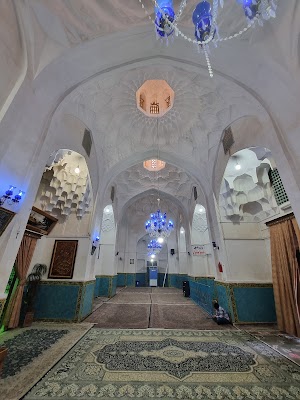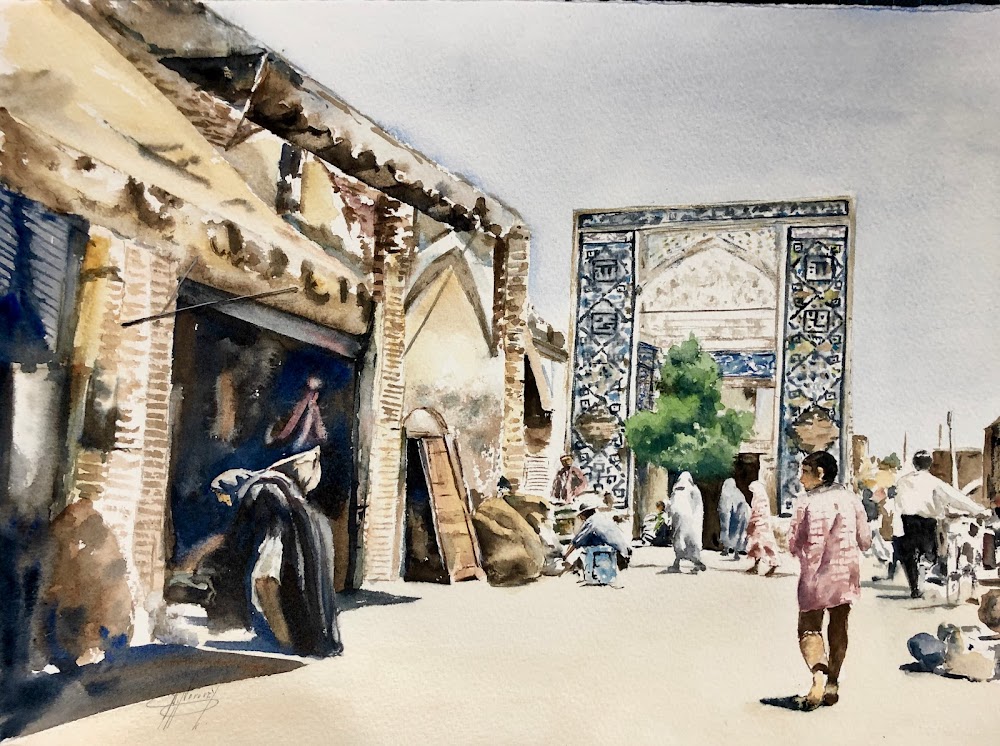Kerman Bazaar (بازار کرمان)
Overview
Kerman Bazaar, nestled in the heart of Kerman in southeastern Iran, is a historic and vibrant marketplace that offers an authentic glimpse into the region's rich cultural heritage. Spanning approximately 1,200 meters, this bazaar is one of the oldest and most extensive in Iran, making it a must-visit destination for travelers eager to experience the country's lively trade traditions.
A Historical Journey
Steeped in history, the Kerman Bazaar dates back to the Safavid era (1501-1736), with significant expansions occurring during the Zand and Qajar periods. Its enduring legacy is reflected in the diverse architectural styles that define various sections of the bazaar, from the elegant arches of the Safavid period to the elaborate embellishments of the Qajar era. Each part of the bazaar tells a story of Iran’s multifaceted history, showcasing the architectural ingenuity that contributes to its charm and functionality.
A Unique Design
The bazaar’s layout is strategically crafted with a network of covered corridors that protect visitors from the region’s extreme weather, whether it be the scorching summer heat or the chill of winter. These corridors are punctuated by magnificent domes and skylights, allowing natural light to flood the space and create an inviting, airy atmosphere for shoppers. The traditional design not only serves practical purposes but also presents a visual feast of intricate mosaics, exquisite brickwork, and beautiful stucco decorations.
A Cultural Hub
Significantly, Kerman Bazaar is not just a commercial center but also a social and cultural epicenter. Visitors will find themselves immersed in the lively sounds of bargaining, the rich aroma of spices, and the vivid displays of goods ranging from hand-woven carpets and traditional textiles to copper handicrafts and herbal medicines. Each alley is dedicated to a specific type of merchandise, allowing tourists to fully appreciate the diversity of local craftsmanship and trade. The hustle and bustle of the market provide a unique opportunity to observe and engage with the local way of life.
Historic Caravanserais
One of the most fascinating elements of Kerman Bazaar is its historic caravanserais, which once served as inns for travelers. The Ganjali Khan Complex, located within the bazaar, is a prime example. Built in the early 17th century, this complex includes a bathhouse, a mosque, and a caravanserai, all centered around a grand courtyard. The Ganjali Khan Bathhouse is particularly noteworthy for its stunning frescoes and detailed tilework, offering insights into the artistic sensibilities of the era. Exploring these sites within the bazaar provides a deeper understanding of the social and economic dynamics intrinsic to Silk Road trade routes.
Exploring the Vakil Bazaar
Another highlight is the Vakil Bazaar section, celebrated for its exquisite architectural elements and specialty shops. Here, you’ll find a beautiful blend of natural stone and brick, with colored glass windows that cast enchanting light patterns onto the floor. This section is especially famous for its pistachios, saffron, and local sweets, making it an ideal spot for souvenirs or gifts. Exploring the Vakil Bazaar offers an intimate glimpse into Kerman’s agricultural bounty and culinary traditions.
A Spiritual Landmark
For art enthusiasts, the approximately four-century-old Jameh Mosque of Kerman, located near the bazaar, is an unmissable site. The mosque’s breathtaking façade, adorned with intricate tilework and calligraphy, exemplifies Persian-Islamic architecture. While the mosque serves as a place of worship, its proximity to the bazaar underscores the integral role of spirituality in the daily lives of Kermani people.
Experiencing Persian Hospitality
Visiting Kerman Bazaar is also an excellent opportunity to experience traditional Persian tea houses, or “chaikhanehs.” These cozy establishments, often nestled within the bazaar, provide the perfect respite for weary shoppers. Enjoying a cup of aromatic Persian tea or a local meal allows tourists to savor the flavors of Kerman while soaking in the ambiance of a place where the past and present seamlessly converge.
In conclusion, Kerman Bazaar is more than just a marketplace; it is a living museum that encapsulates centuries of Persian trade, culture, and architecture. Whether you are an avid shopper, a history buff, or a casual visitor, the bazaar’s lively atmosphere invites exploration, engagement, and a genuine experience of the warmth and hospitality of Kerman. A visit to Kerman Bazaar promises not only an array of unique and handcrafted products but also lasting memories of your journey through one of Iran's most historic and enchanting locales.






